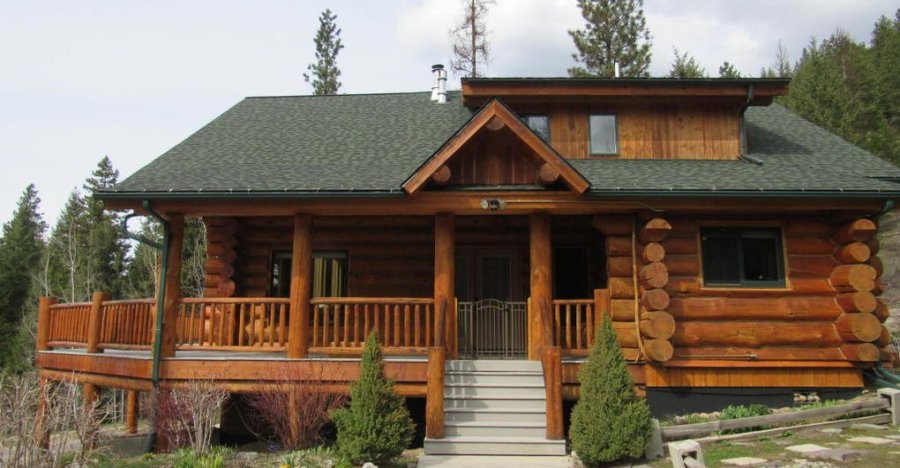This beautifully crafted log house has a gourmet kitchen that takes full advantage of the stunning views of the Cabinet Mountains in Montana. This log house property is fenced with a large garden area and a variety of fruit trees. The Montana property has raspberry bushes that are big producers of a sweet Raspberry variety. The log house property has a foundation in place for a guest house and concrete pillars for a garage/shop. There is also a beautifully crafted pavilion that can be used as a carport or as a gathering place for campfires and barbecues. The yard is beautifully landscaped and blooms in beautiful color each Spring. The property is close to hiking, cross country skiing, boating, hunting, and so much more. This Montana log house construction has 4 bedrooms, 3 bathrooms and 3,268 square feet of space. You’ll fall in love with the scenic views of the mountains from your wraparound outdoor patio and throughout the breathtaking log house.

By choosing a log cabin design, you have decided to live or stay in a place surrounded by timber and logs. Log house construction use building materials that are both sustainable and renewable, and you can feel good about your home choice. There are more than two dozen species of wood that are often used to build log house designs in North America.
Almost all of these wood species are softwoods to include evergreen trees such as fir, pine, cypress, cedar, spruce, and hemlock. Although each log house construction favors certain varieties of wood, the successful use of so many varieties of wood goes to show that not one type of tree makes a better log house construction than another. Instead, the choice that you make will depend on the type of wood your log house builder and what you prefer. Despite the many differences, the various wood varieties all share some common characteristics.
Whatever wood you decide to use for your log house construction, all wood has thermal properties. One of the benefits of wood and logs for use as building materials in your log house is in the thermal properties that it possesses. Logs have several thermal properties that help with ts energy efficiency. Logs react to heat retention and release in a similar way to stone. Think about a large rock that has been sitting outside in the summer sun all day. Then as dusk falls and the temperatures start to cool, bring the rock back inside. Depending on the size of the rock, the stone will continue to emit the heat that was absorbed for hours throughout the day. Logs work in the same manner. This is known as thermal mass. Logs will conduct heat more slowly than the other types of building materials. Specific heat is a measurement of a building material’s capacity to store thermal energy. Logs have a high rate of specific heat that is relative to that of brick or concrete, but because it doesn’t conduct heat quite as quickly as these building materials, it tends not to be used for heat storage.


